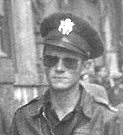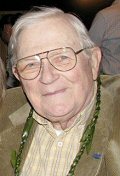|
MARKETING AND PRODUCT TESTS
In August 1966 a second prototype was sent to Fort Lewis. This version was given a favorable rating.
When first starting to market the Mark II, Bud would travel across the country to visit all the major military forts, Benning, Bragg, Lewis etc. The goal of course was to obtain a government contract to have the knife become standard issue.
The picture at left is a copy of a notarized letter from Gerber to the Commanding General of the USMC base at Camp Lejeune, North Carolina. It identifies Bud as a Gerber Company Representative authorized to do business on behalf of the Gerber Company.
Tests were done with actual production knives under field conditions. I received the following information via email:
I have a early Gerber Mark II, Serial No. 001043 and that number is read with the blade pointing down. In 1967, I was a young Special Forces Officer and was given the knife to test by a Gerber Salesperson. He was observing a military parachute drop at McMinnville, Oregon and approached me on the drop zone and asked if I would like to test the knife. Of course I said yes and have had it since then.
I carried the knife for 10 years. It made a huge impression on anyone that saw it! I tried various methods of securing it, finally settled on taping it to my left LBE suspenders with the handle down. As I remember, I did make a couple of reports back to the Gerber sales person, one I remember was on the scabbard not securing the blade under impact. I had decided to try placing the knife on my leg during a jump. This turned out to be the wrong thing to do. After landing, I noticed the knife was missing. I discovered it sticking in the ground about 10 feet away.
Jerry Bowdle, Cpt. USA (Ret)
The salesperson might have been Bud.
But adoption of the Mark II as standard issue never happened. Had it, Bud would have become a rich man.
| 
![[Gerber Letter 1]](GerberLetter1t.jpg)
![[Initial Design]](InitialDesignt.jpg)
![[Intermediate Design]](IntermediateDesignt.jpg)
![[Gerber Letter 2]](GerberLetter2t.jpg)
![[Intermediate Design]](BudsMarkII.jpg)
